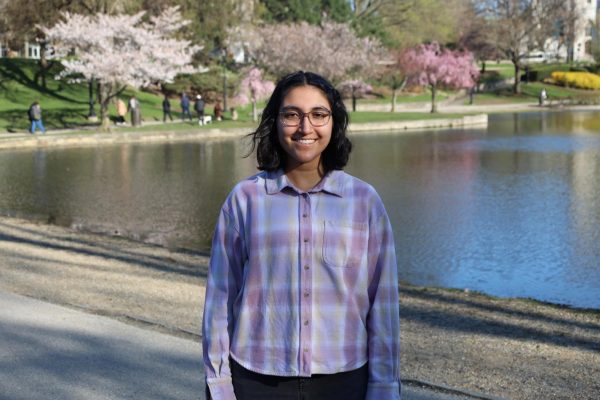The Earthshot Prize: A hope for combating climate change
December 9, 2022
Florida’s Hurricane Ian, Europe’s summer drought exacerbated by heatwaves and the Pakistan floods stand out the most prominently in the multi-billion dollar climate disasters of 2022. However, many other climate-related disasters this year cannot be overlooked, including Hurricane Fiona, flooding in Australia and ongoing droughts and fires. The consequent loss of life, livelihood, crops and property has been unprecedented. Although initiatives such as rebuilding, increased funding, crawling government interventions and thoughts and prayers have been enacted, they are not enough to truly combat climate change. Cue the Earthshot Prize Awards, a serious attempt to tackle climate change in the next decade.
Taking inspiration from President John F. Kennedy’s “Moonshot” challenge of the 1960s, which aimed to land humans on the moon within a decade, Prince William and the Royal Foundation established the Earthshot Prize in 2020. It is supported by several global organizations committed to conserving the environment and is a stellar attempt at repairing the planet at a scale and speed not seen before. It provides a uniform platform for eco-innovation at any scale and selects five winners each year that meet the prize’s priorities. Each winner is provided with funding, partnerships and an organization to rapidly improve the innovations and, therefore, their impact. This year, the Earthshot Prize Awards partnered with the John F. Kennedy Foundation and came to Boston, Massachusetts, Kennedy’s birthplace. Amid all the furor surrounding other news coverage, the Earthshot Prize Awards did not receive the spotlight—or rather, floodlight—that the event deserved. There are several factors that may have contributed to this.
First and foremost, the awards ceremony happened on Dec. 2, but people could only view the taped version on PBS, MultiChoice channels, YouTube or BBC beginning on Dec. 5. It was not a live event, unlike other award shows, nor were there channels announcing the event. As movie or music awards garner so much publicity and media mention, it was rather tragic that the Earthshot Prize Awards barely received airtime. Even Taylor Swift’s concert tickets fiasco seemed to be much more important than fixing the ongoing climate crisis.
Then, there was the small matter of the royal family itself. Prince William’s Boston visit was overshadowed by the race row that erupted at Buckingham Palace when William’s godmother, Lady Susan Hussey, was accused of repeatedly asking a Black charity boss, Ngozi Fulani, where she was “really” from. Lady Hussey has since resigned, and the royal family issued a statement denouncing racism. But the damage was done—Prince William’s Boston itinerary was rarely mentioned in the news without details of the race row. And if that wasn’t enough, Netflix also released the trailer for its docuseries “Harry and Meghan.” The timing was most inconvenient, considering it happened on the second day of Prince William’s Boston visit. While the docuseries might amount to little more than providing material for future episodes of Netflix’s “The Crown” or funding for Harry and Meghan’s lifestyle, it did manage to take oxygen out of Prince William’s visit, causing the focus to shift to family dynamics rather than climate change.
Furthermore, some other uncomfortable moments were covered in the media from Prince William’s Boston trip. Prince William met President Joe Biden briefly outside the John F. Kennedy Presidential Library, where both men were booed by protesters with some colorful language, again taking away from the main issue that Prince William was there to address. References to colonialism and racism were also made by Reverend Mariama White-Hammond in a speech at Boston City Hall before the onset of the Earthshot Prize event. While such issues are critical to address, the timing of her remarks was a questionable choice.
In addition, there were other important aspects of Prince William’s trip that deserved more coverage in the media. Instead of flying in a private jet typical of royals, they flew commercial, reducing their carbon emissions. They walked the walk and didn’t just talk the talk about climate change. There was also the harborside walk in Piers Park, where they got to see the work that will be done by one of last year’s Earthshot Prize finalists, Living Seawalls, in collaboration with Stone Living Lab in an attempt to improve biodiversity and flooding in the Boston Harbor. The awards event itself was complete with a green carpet at the MGM Music Hall and a smattering of celebrities such as Billie Eilish, David Attenborough and David Beckham. The attendees were urged to make sustainable fashion choices and wear consignment, vintage or sustainably created clothing, with the Princess of Wales dressed in a green rental gown as example.
However, there should have been more support for the awards from both politicians and celebrities. Al Gore, John Kerry and Bernie Sanders could have brought in their political prowess. And there’s nothing like celebrities bringing the glitz and glamor to shine a light on an event and boost sustainable fashion.
Even with everything else going on, the finalists and winners were the true stars of the show. The Earthshot prize is divided into five categories: “Protect and Restore Nature,” “Clean Our Air,” “Revive Our Oceans”, “Build a Waste-Free World” and “Fix Out Climate.” This year’s winners, were Kheyti from India with their Greenhouse-in-a-Box, Mukuru Clean Stoves from Kenya, Australia’s Indigenous women of the Great Barrier Reef, NOTPLA from the United Kingdom and 44.01 from Oman which removes carbon dioxide by mineralizing it in rock, respectively.
It is an amazing lineup of human innovation, potential and creativity and an exciting glimpse into where these innovative ideas could lead us. And it is heartening to know that there is so much hope to combat climate change. Meanwhile, we can all do our part to help. Little choices every day, like reducing our waste, recycling, reusing items and making sustainable choices, can go a long way in conjunction with choosing leaders that make climate change a priority.


